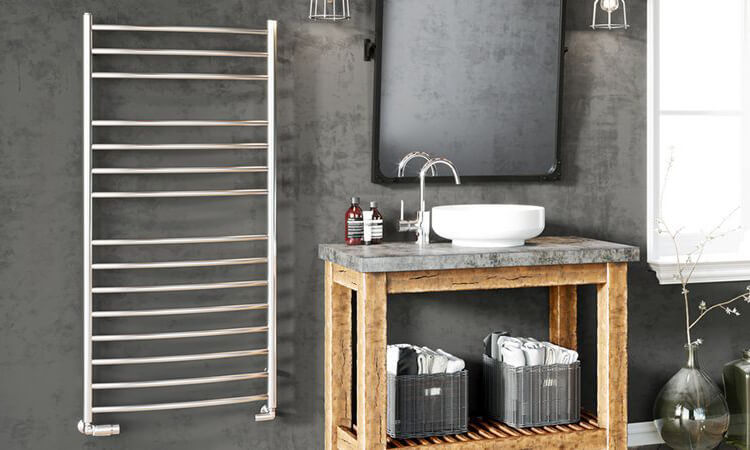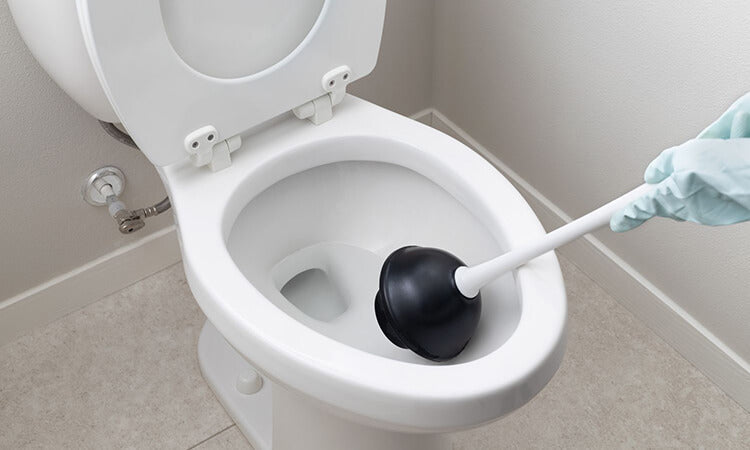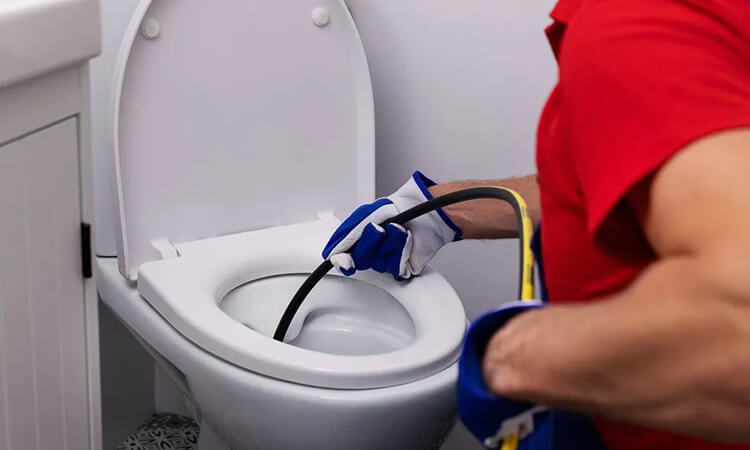Picture this: it’s a chilly winter evening, and you’ve just wrapped up a long, draining day at work. You step into your bathroom, reach for a towel—and it’s warm, dry, and inviting. That small touch of comfort instantly melts away fatigue and cold.
But during humid or rainy seasons, things aren’t always so pleasant. Damp towels can leave a musty smell, fail to dry properly, and even harbor bacteria. Not only does this affect your comfort, but it can also pose health risks for your family.
This is where a high-quality towel warmer makes a difference. It transforms an ordinary bathroom routine into a luxurious, hygienic experience, keeping your towels fresh, dry, and ready whenever you need them.
With so many towel warmers on the market—differing in heating methods, installation styles, materials, sizes, and designs—choosing the right one can feel overwhelming. That’s why Giving Tree Home has put together this complete guide to towel warmer types, helping you easily find the perfect fit for your bathroom and lifestyle.
Classification by Heating Method
Electric Towel Warmers

Electric towel warmers use built-in heating wires, tubes, or PTC ceramic elements to quickly warm and dry towels. When powered on, electricity converts directly into heat, which transfers through the metal surface of the warmer and into your towels—giving you that cozy, fresh-out-of-the-dryer feeling every time.
This is by far the most common type in American households. Around 95% of families choose electric towel warmers because they’re simple to use: just plug them in or hardwire, set your preferred temperature, and enjoy. Most models offer multiple temperature settings (usually 86–140°F), and many come with a timer or auto shut-off feature for safety.
Subtypes: Plug-in vs. Hardwired
Plug-in:
- Connects directly to a standard household outlet.
- Installation is simple—just unpack, mount on the wall (or place freestanding), and plug in.
- Easy to uninstall, making it ideal for renters or anyone who doesn’t want to modify home wiring.
- Limitations: placement depends on outlet location, exposed cords may affect aesthetics, and power is usually lower (80–200 Watts), which can heat towels slightly slower.
Hardwired:
- Connected directly to your home’s electrical circuit by a licensed electrician.
- No exposed cords, giving a cleaner, more polished look.
- Supports higher power (200–500 Watts) for faster heating, perfect for new construction or bathroom renovations.
- Limitations: higher installation cost, less mobility once installed, and more complicated maintenance if circuit issues arise.
Appearance Styles
- Wall-mounted plug-in: Minimalist straight-bar or ladder designs, modern and space-saving.
- Hardwired: Can be recessed into the wall for a sleek, integrated look.
- Bucket: Compact, fits a variety of bathroom decor styles.
Hydronic (Hot Water Circulation) Towel Warmers

Hydronic towel warmers—sometimes called hot water circulation towel warmers—use the heat from your home’s central heating system or a wall-mounted boiler. Hot water flows through the warmer’s internal pipes, transferring gentle, consistent heat through the metal frame to warm your towels.
Because the heat comes from your existing heating system, these warmers use almost no extra electricity during the heating season, making them energy-efficient. Towels heat evenly, without hot spots, and the warmth feels soft and steady (typically around 104–140°F, consistent with the water temperature).
Popularity and Limitations
Hydronic towel warmers aren’t very common in the U.S.—only about 5% of households use them. Why? Installation requires connecting to the home’s hot water pipes, which usually must be planned during new construction or a full bathroom renovation. Retrofitting an existing bathroom can be complicated and costly.
Another limitation is temperature control. These warmers rely on the heating system’s water temperature, so you can’t adjust the towel warmer independently. If your heating system is turned off or running low, the towels won’t get as warm.
Best Scenarios for Use
- Homes in colder regions with central heating, where the longer heating season maximizes energy savings.
- Homes with wall-mounted boilers in warmer regions, using the warmer during heating months.
- Ideal for homeowners who are planning plumbing and heating upgrades during bathroom renovations.
Not recommended for renters or anyone looking to retrofit without major plumbing work.
Appearance and Style
- Mounting: Mostly wall-mounted; pipe structures are visible, though some models hide them for a cleaner look.
- Materials: Chrome-plated or stainless steel.
- Colors & style: Primarily silver, classic and timeless—perfect for traditional or high-end bathroom designs.
Classification by Installation Method
Wall-Mounted Towel Warmers

Wall-mounted towel warmers are the most popular choice for household bathrooms, especially in smaller spaces. These warmers attach securely to the wall using brackets—often replacing an existing towel rack or installed near the shower.
By staying off the floor, they free up space and make the bathroom look cleaner and more organized. Whether in a compact apartment, a standard family bathroom, or a hotel room, wall-mounted models fit seamlessly.
Appearance and Style
Wall-mounted towel warmers come in a variety of styles to suit any bathroom design:
- Straight-bar: Parallel bars, perfect for hanging multiple small towels.
- Ladder-style: Bars arranged like steps, ideal for towels and bath sheets of different sizes.
- Decorative or curved designs: Adds a touch of luxury or uniqueness to the bathroom.
- Colors: Most commonly silver (chrome-plated or stainless steel) or black. Some brands offer white, gold, or other niche finishes for a custom look.
Floor-Standing / Mobile Towel Warmers

Floor-standing, or mobile towel warmers, are perfect for those who want flexibility without permanent installation. They come with a stable base and can be used right after plugging in—no wall brackets or drilling required.
These warmers are perfect for renters who want to avoid wall damage, households that need temporary or seasonal towel heating during the colder months, and larger bathrooms where the warmer’s location might need to shift between the shower area and the bathroom entrance.
Appearance and Style
- Structure: Mostly minimalist and practical, with vertical frames. Options include single-bar, double-bar, or multi-bar designs.
- Mobility: Some models feature wheels on the base for easy movement.
- Colors: Typically silver or black, blending easily with most bathroom decor.
Towel Heating Buckets

Towel heating buckets are compact, vertical devices designed to warm multiple towels at once, with larger models even accommodating full-size bath sheets. They’re perfect for small apartments where space is limited, single-person apartments that require personal towel warming, or for anyone who frequently works out or swims and wants quick access to a warm towel. Because of their smaller size, these units may have some limitations, such as being unable to heat bulkier items like bathrobes.
Appearance and Style
- Design: Mostly cylindrical bucket shapes, simple and stylish.
- Colors: White, gray, natural wood tones, and other variations.
- Aesthetic appeal: Compact and clean, these buckets fit neatly into modern bathrooms without taking up much space.
Classification by Material
Stainless Steel
Stainless steel is highly stable, moisture-resistant, and corrosion-resistant, making it perfect for long-term use in humid bathrooms. Its moderate thermal conductivity ensures even heat distribution without hot spots. The material is strong, capable of supporting multiple heavy bath sheets without bending, and the smooth surface is easy to clean—just wipe away stains or water spots with a damp cloth.
Stainless steel models are generally 10%–30% more expensive than aluminum or basic chrome-plated options. Heat-up speed is slightly slower than chrome, taking a bit longer to reach the desired temperature. These warmers are ideal for families seeking durability, especially in bathrooms with poor ventilation or high humidity, and for households prioritizing material safety, such as those with elderly members or children.
Chrome-Plated
Chrome-plated towel warmers usually feature a metal base (iron or aluminum alloy) coated with a shiny chrome layer. They heat quickly thanks to excellent thermal conductivity and offer a bright, mirror-like finish that enhances bathroom aesthetics. Smooth surfaces are easy to clean and resist dust or water stains.
However, corrosion resistance depends on the thickness and quality of the chrome layer. Thin or scratched chrome can expose the base metal to rust, giving a shorter lifespan than stainless steel—typically 5–8 years. Over time, chrome may peel or oxidize, affecting appearance. Chrome-plated warmers are best suited for households that value style, have well-ventilated bathrooms, and plan to replace or upgrade within a moderate timeframe.
Aluminum
Aluminum is lightweight—about one-third the weight of stainless steel—making installation and mobility easier. It heats quickly and is usually the least expensive option among the three materials.
Corrosion resistance is weaker; aluminum can oxidize, especially in humid bathrooms, and damaged coatings may lead to spots or corrosion. Modern manufacturing techniques, like using aviation-grade aluminum with protective coatings, can mitigate these issues and enhance durability.
Aluminum towel warmers are ideal for renters, short-term housing, or households with limited budgets. They work best for hanging small towels or lightweight fabrics, and aren’t recommended for long-term use with heavy bath sheets.
Ending
Choosing the right towel warmer for your home doesn’t have to be overwhelming. Now that you know the different types, materials, and features, you can confidently pick a model that fits your bathroom and lifestyle perfectly.
Whether you’re looking for a compact solution for a small apartment, a luxurious wall-mounted option for a master bath, or a versatile floor-standing model, there’s a towel warmer that meets your needs. With years of experience and thousands of satisfied customers, we’re here to help you find the ideal choice to keep your towels warm, dry, and ready whenever you need them.





